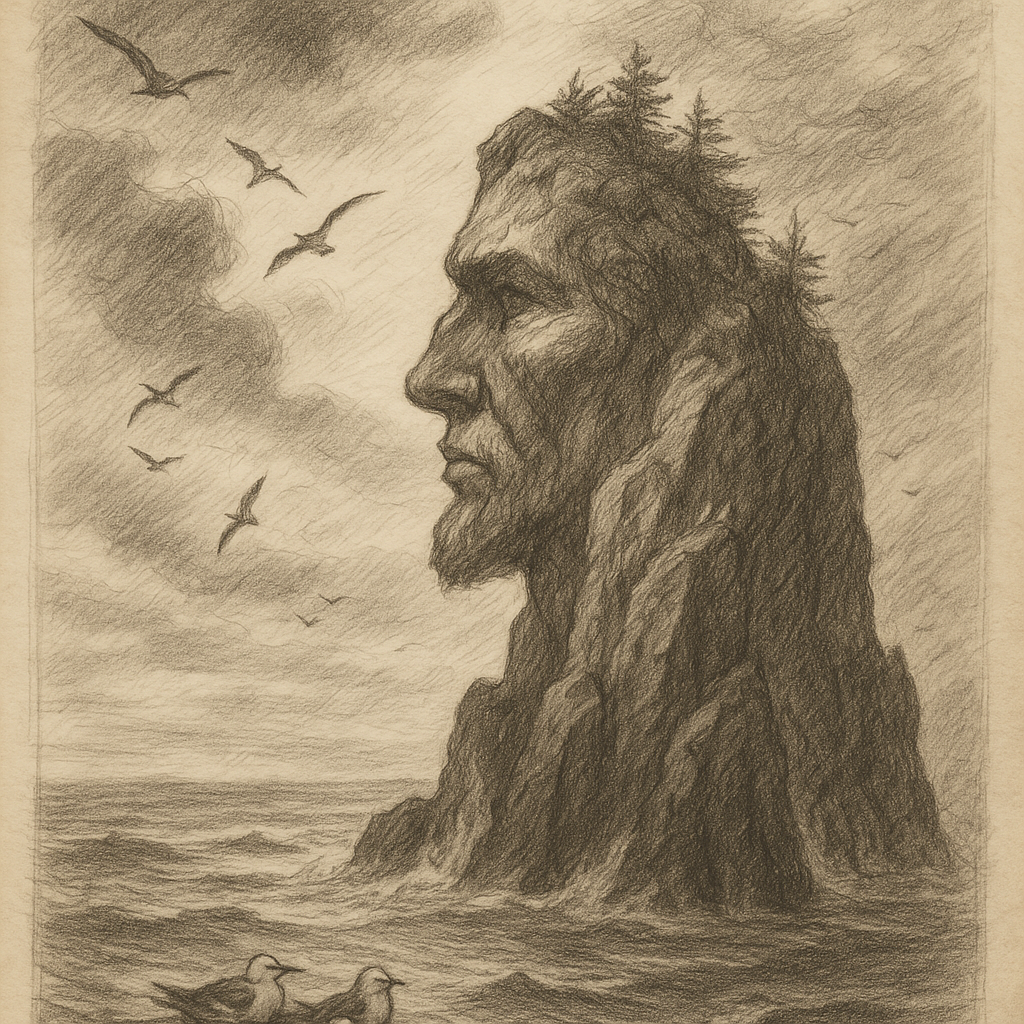Hall Island: A Remote Frontier of Mystery and Nature
Hall Island is a remote, uninhabited island located in the Bering Sea, off the northwest coast of Alaska. Part of the larger St. Matthew Island group, Hall Island lies approximately 5 kilometers to the east of St. Matthew Island and forms one of the most isolated landmasses within U.S. territory in the northern Pacific region. Here’s a closer look at this intriguing and rarely visited island.
Geographical Location and Geological Significance
Hall Island is situated between the vast expanses of the Bering Sea and Arctic waters, roughly 300 kilometers west of mainland Alaska. It forms part of the Bering Sea Islands, specifically the St. Matthew Island group, which also includes St. Matthew Island itself and the nearby Pinnacle Island. Hall Island spans approximately 6.2 miles (10 km) in length and is characterized by rugged terrain, steep cliffs, and occasional low-lying tundra.
Geologically, Hall Island shares the same origin as the neighboring islands — a volcanic formation primarily composed of basaltic rock. Though volcanic activity has long ceased, the island’s topography reflects its dramatic past, with sharp ridges, coastal rock outcrops, and weather-hollowed sea caves that have withstood centuries of oceanic erosion.
Climate and Ecology
Due to its northern latitude, Hall Island is subject to a cold maritime climate. Summers are brief and cool, with temperatures rarely exceeding 10°C, while winters are harsh, windy, and blanketed with snow. Fog, wind, and rain are common features, adding to the island’s wild and daunting atmosphere.
Despite the harsh conditions, Hall Island hosts a surprisingly rich ecosystem. The vegetation is largely comprised of tundra grasses, mosses, lichens, and dwarf shrubs adapted to the cold climate. Birdlife on Hall Island is particularly notable, and the island is recognized as an Important Bird Area (IBA). Species such as the crested auklet, thick-billed murre, and northern fulmar are known to nest on its cliffs. It is also a key breeding ground for seabirds due to its isolation and absence of terrestrial predators. Marine mammals such as seals, walrus, and occasionally whales inhabit the surrounding waters as part of their migratory routes through the Bering Sea.
Human Interaction and History
Hall Island is uninhabited and has seen minimal human impact throughout history. The island is managed as part of the Alaska Maritime National Wildlife Refuge, and access is highly restricted to prevent ecological disturbance. The abandonment of nearby St. Matthew Island by the U.S. military after a brief occupation during World War II further contributed to the isolation of Hall Island.
There is no evidence of long-term native habitation on Hall Island, although the indigenous Yup’ik people from mainland Alaska are known to have historically traveled in the region for hunting and fishing. Archaeological surveys have found limited artifacts suggesting that the area may have been used intermittently by ancient coastal communities.
Interesting Facts About Hall Island
– Hall Island gained unexpected fame in recent years when it was featured in a 2016 viral video showing a “mammoth-like” creature swimming in the island’s coastal waters. The clip sparked widespread debate before being debunked as a likely case of creative editing and misinterpretation.
– In 2009, a population of walrus was found using the beaches of Hall Island as a haul-out site — an increasingly common behavior attributed to the retreat of sea ice caused by climate change.
– Due to its remoteness, Hall Island serves as an outdoor laboratory for scientists studying undisturbed Arctic and subarctic ecosystems. Species interactions, climate patterns, and seabird breeding habits can be monitored here with minimal human interference.
– The island also played a role in early Cold War surveillance strategies, due to its proximity to Russia across the Bering Strait. However, no permanent installation was ever founded there.
Legends and Mythology of Hall Island
Though Hall Island itself holds no established native legends, the surrounding Bering Sea and nearby lands are steeped in indigenous folklore. Among the Yup’ik and Inupiat peoples, seafarers’ tales speak of “ghost islands” that appear and vanish in the mists — some believe Hall Island might be one such place. These stories are often interwoven with mythic sea creatures, shape-shifting spirits, and lost travelers who sail into fog and are never seen again.
One tale describes a great white bird said to guard sacred nesting grounds; locals call it the “Icewing.” According to legend, the Icewing descends on invaders with a scream that freezes the soul. Though certainly mythical, such stories reflect the profound spiritual connection indigenous communities have with the natural world — seeing islands like Hall not just as places, but as living powers that must be respected and approached with reverence.
Accessibility and Conservation
Due to its protected status within the Alaska Maritime National Wildlife Refuge, access to Hall Island is heavily restricted. Visits are typically limited to scientists, conservationists, and authorized personnel conducting environmental monitoring. Landing on the island requires both federal and state permits, and even then, weather conditions often make travel dangerous. Transport is usually arranged via research or charter vessels, weather permitting, from remote Alaskan ports.
Strict biosecurity measures are enforced to prevent the introduction of invasive species. Efforts are ongoing to monitor rising temperatures in the region, which threatens to alter the fragile ecosystems of Hall Island and its surrounding waters.
A Window Into the Wild
Hall Island stands as one of the last truly wild places in the United States — untouched, mysterious, and fiercely protected. While most of the world navigates urbanization and environmental decline, Hall Island remains isolated, acting as a vital refuge for Arctic wildlife and a natural benchmark for ecological study. For scientists and environmentalists, it offers a rare, living glimpse into a time before human dominion — a place where nature still reigns supreme.


